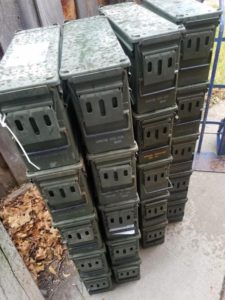Post-apocalyptic fiction is usually, by definition, after the apocalypse. Its a niggling point, but if your science fiction is about the apocalypse, then, really, it’s intra-apocalypse* fiction.
But, in the case of the book WarDay, it is most definitely post-apocalyptic fiction.
The book has been out of print for a while but I enjoyed it when i was younger and when a used copy turned up on Amazon for a few bucks I grabbed it.
WarDay is about two reporters who decide to ‘see America’ after a nuclear exchange five years earlier. They travel cross country, interviewing people and chronicling their experiences. The book came out in 1984 and was predicated around the then-plausible idea of a somewhat limited nuclear exchange with the Soviets.
If you’ve read Max Brook’s ‘World War Z’ book, the format will be very familiar….journalists interview various people and let them tell their stories of how they survived the one-day war.
This book shows some of the tropes that we’ve come to see in post-apocalyptic fiction that has been printed since then. Things like a Mexican reconquista of the southwest, foreign troops providing ‘aid’ that turns out to be more of an occupation, submarines cutoff from contact thinking the war is still going on, survivors in cities eating each other, etc, etc.
In addition to these narratives, WarDay also tries to cover a bit of the .gov’s experience as well. There are copies of reports, directives, orders, and other bureaucratic paper to show how the government eventually tries to get back to normal with forced relocations, rationing, martial law, etc.
Having come out in 1984, some of the book is dated…reporters using tape recorders, for example…but the descriptions of starvation, radiation poisoning, oppression, etc, are pretty timeless.
Because the book is written as a ‘documentary’, don’t expect the usual townies-vs-cannibal-army that is a staple of this sort of genre. But if you want a more thoughtful read that seems quite rooted in reality, this is a good choice.
Is there anything to be ‘learned’ from it? Probably not. It’s most redeeming quality, from a survivalists standpoint, is that it’s portrayal of how the average person fared in a nuclear aftermath might make you think twice about not stocking up on more of everything.
I think it’s a good read, and definitely a ‘thinking mans’ sort of book….light on gunplay and Ahern-esqe ubermensch, the realistic scenarios, responses, and consequences make this a story that seems quite plausible.
If you can nail down a used copy for a few bucks, I think you’ll find it a worthwhile read. Just remember the time it was written.
* = Pre-apocalypse fiction would be before the apocalypse, post-apocalypse fiction is after the apocalypse. Whats the prefix for during the apocalypse? In-apocalyptic fiction? Intra-apocalypse? Peri-apocalypse? Mid-apocalypse? I’m going with intra-.



